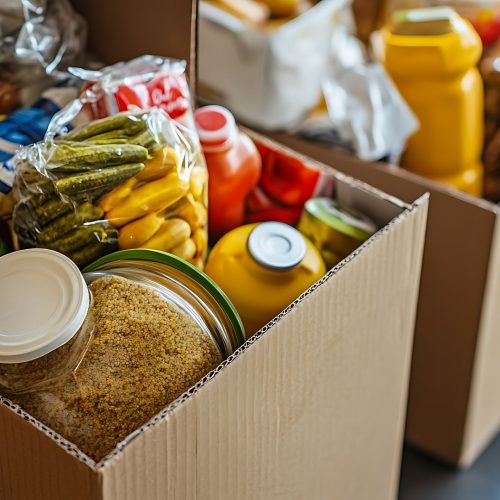Your Community Resource Guide
If you or someone you know is using SNAP (formerly food stamps) or stretching your food budget, these local pantries and support services are here in our North-of-Boston region.
Why this matters
Food insecurity doesn’t just affect large cities—it also touches suburban communities north of Boston. SNAP is designed to help eligible households keep nutritious food on the table. Pairing SNAP with local food pantries can help fill the gaps—fresh produce, dairy, meat, personal-care items—that the monthly benefit alone may not cover.
Town-by-Town Pantry Resources
Woburn, MA
- The Dwelling Place – Free dinner program in downtown Woburn (at the United Methodist Church, 523 Main St.). Guests can arrive at 5:00 pm on Mondays, Wednesdays and Saturdays; fresh fruit, vegetables & grocery items are also distributed. (thedwellingplacewoburn.org)
- Woburn Council of Social Concern – Food pantry at 2 Merrimac St., Woburn, serving Woburn & Winchester residents. (https://www.socialconcern.org/services/interior-design/)
- St. Vincent de Paul (Woburn) – Pantry located at 8 Summer St., Woburn; groceries, refrigerated items, and hygiene products available by appointment. (https://svdpwoburn.org/)
How SNAP links help: The Council of Social Concern and others serve as vital safety nets when SNAP benefits fall short. Visit them in tandem with your SNAP benefits to stretch your food budget further.
Reading, MA
- Reading Food Pantry – Located at 6 Salem St., Reading; open Mondays 6:30-7:30 pm and Fridays 10:30-11:30 am; no waiting period for first visit; eligible to any Reading resident in need. (readingma.gov)
SNAP-specific info: The Town of Reading’s “SNAP Benefits & Local Community Resources” page provides direct guidance for residents using SNAP. (readingma.gov)
Tip: Consider a dual approach—apply or check eligibility for SNAP, while also connecting with the pantry for supplemental support.
Wakefield, MA
- Wakefield Food Pantry – Based at the Americal Civic Center, 467 Main St., Wakefield. Offers grocery-style food picking twice a month, a “Kids First” program in the summer, mobile markets for seniors/disabled, and referral to other resources such as SNAP and WIC. (Wakefield Food Pantry)
Special SNAP-friendly feature: The pantry is involved in the local market’s SNAP/EBT match program, making fresh produce more accessible for SNAP users. (WakefieldFarmersMkt)
Neighborhood tip: For working households, the Thursday evening hours can be especially helpful. Also show readers how the pantry and farmers market collaboration amplifies their buying power.
Burlington, MA
- People Helping People – Burlington – Food pantry at 21 Murray Ave., Burlington; serves local Burlington households. (https://peoplehelpingpeopleinc.org/)
SNAP support angle: While the Burlington site may not state SNAP-matching explicitly here, their outreach channels include helping seniors connect with the Burlington Council on Aging for SNAP outreach. (https://peoplehelpingpeopleinc.org/)
Family-friendly reminder: Even if you are using SNAP benefits, local pantries remain open to provide supplemental items. Encourage sharing with families or neighbors who may not yet have tapped into these services
How to Use SNAP + Pantries Together: A Practical Guide
- Step 1 – Check or apply for SNAP. Many local pantries, COAs or social service agencies can help you navigate the application or recertification process.
- Step 2 – Visit your local pantry for supplemental groceries. Use SNAP to purchase staples; use the pantry to fill in the gaps (fresh produce, dairy, hygiene).
- Step 3 – Coordinate your timing. For example: Use SNAP early in the month for your regular shopping; plan a pantry visit mid-month when cupboards are running low.
- Step 4 – Bring required documentation. Some pantries ask for proof of residency (utility bill, ID) or restrict visits to twice a month. Check each location ahead of time.
- Step 5 – Share the knowledge. Post links on community Facebook pages, share the blog post in your newsletter, or print a one-pager for local libraries or COAs.
- Step 6 – Volunteer or donate. A reminder that even working households or those with SNAP can give back: donate non-perishables, volunteer time, or host a food drive.
Frequently Asked Questions
Q: If I already receive SNAP benefits, can I still use a food pantry?
Yes — in fact, that’s often the smartest strategy. Food pantries are meant to supplement, not duplicate, SNAP. They help cover items SNAP may not fully address (e.g., fresh produce, hygiene items).
Q: Do I need to prove income or residency every time?
It depends on the pantry. Some require proof of residency or appointment (e.g., Woburn’s Council of Social Concern). (Food Banks) Others (e.g., Reading Food Pantry) say any resident in need can visit without a waiting period. (readingma.gov)
It’s always best to call ahead for the latest hours and requirements.
Q: Can I visit more than once a month?
Again: it depends. For example, Woburn’s Council of Social Concern limits pantry use to once per month. (Food Banks) Some other pantries permit twice per month or more—check the specific site.
Q: My SNAP benefits are delayed or at risk—what should I do?
Many towns have alerts when SNAP funds are delayed (as Reading recently posted). (readingma.gov) In those cases, the pantry becomes even more critical. Visiting a pantry proactively can help bridge the gap.



